
We have a subject guide and handouts on how to properly cite materials properly in a variety of formats including APA and MLA.

Keep some steps in mind when beginning your work on a literature review:

A literature review is an overview of literature published on a topic, issue, or theory. It can cover a wide variety of materials including but not limited to scholarly articles, books, dissertations, reports, conference proceedings, etc. The purpose of a literature review is to describe, summarize, and evaluate the works being examined for the review.
How you construct a literature review and the specific outline of it can vary depending on what your professor has laid out for you in your assignment. The review can be just a summary of sources on the subject you are writing about or it could be an examination of the material on your chosen topic. It can also be an analysis of previous research in an in-depth manner or just trace the development of a field of study over time. A good literature review should ultimately be a guide for its audience, giving them a solid idea about what extent and limits of the research has been done so far.

(Link)
When writing a literature review, consider first what it is you want to write about. Your topic summarized in one sentence is your thesis. Next you should think about how you want to organize your material. What is the most important thing you want to get across in your presentation of resources?
The most basic organization of a literature review is to put it together like a general academic paper with an Introduction, Body, and Conclusion – a beginning where you lay out to the reader what you are doing, a middle where you discuss the literature in question, and an ending where you sum up what you have been trying to prove. Another way to organize your paper is by theme or method or chronology.
A third way to organize your paper is by author or philosophy.
When you begin to work on your literature review, keep in mind the following ideas:

Citation is defined by the Oxford English Dictionary as “the action of citing or quoting any words or written passage, quotation”. In plain English that means that if you use an article or book for your research or quote something that someone else said in your paper then you must list where you got it from. Citation allows you to give credit to the authors whose research you are using and allows your readers to be able to find and examine your sources. Proper citation is critical to good academic research. It is also an important step in avoiding Plagiarism. Please remember to be careful and cite all the sources you use in your paper. We have handouts that specifically deal with how to cite material in a variety of formats properly.
The Oxford English Dictionary defines Plagiarism as “the action or practice of taking someone else’s work, idea, etc., and passing it off as one’s own”. In other words it is stealing and cheating by trying to pass off someone else’s idea as something you came up with on your own. Some common types of plagiarism can be (and are not just limited to) cutting and pasting without citing an original source, incorrectly paraphrasing material, and making up citations. Please remember to be careful and cite all the sources you use in your paper. We have handouts that specifically deal with how to cite material in a variety of formats properly.